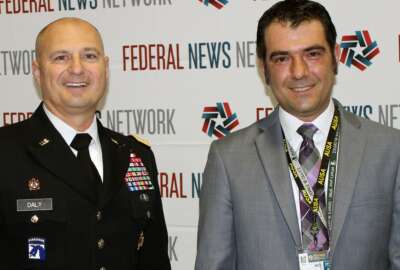The Army is trying to make itself more predictable in order to prepare better for future conflicts with near-peer competitors, modernize more effectively and give its employees better lives.
The Regionally Aligned Readiness and Modernization Model (ReARMM) will better balance timing and priorities within the service by dedicating specific periods for upgrades, training, deployments and other events from 2023 to 2027.
The Army invested significant resources and leadership into restoring readiness and modernizing our Army,” the service’s leaders wrote Tuesday. “However, our readiness focus resulted in an unsustainable operational tempo and placed significant demands on units, leaders, and soldiers and families and stress on the force.”
The Army says the top priority in this new strategy is its people.
“Today, Army units operate in an environment of unpredictability, and arguably even instability,” Lt. Gen. Leopoldo Quintas, deputy of Army Forces Command, said Wednesday at the Association of the United States Army conference. “Units are placed on rotational missions based on their availability, and these missions vary in location, length, manning, readiness requirements and equipment just to name a few. Modernization today occurs when we can find a window to fit it in, or simultaneous with other activities.”
Quintas said every week, month and year is filled with constant change and high tempo for soldiers.
“Our soldiers and families can deal with a lot of tempo, but unpredictability results in an incredible amount of stress on the force,” he said.
The balance is giving people enough predictability, while also being able to take adversaries by surprise. At the same time, the Army is trying to balance current and future risk.
“We are trying to be rigidly predictable for our allies and partners, while at the same time being operationally unpredictable to our adversaries and foes or those that might do us hard,” Lt. Gen. Charles Flynn, deputy chief of staff for G-3/5/7 said.
The Army will be focusing regionally on long-term strategy, potential conflict, crises (like COVID-19) and continually change to stay technologically superior.
Quintas said there are four ways the Army is creating more predictability. One is to establish rotational alignment with predictable training and deployment.
The Army is changing its Combat Training Centers (CTCs) to rebalance the amount of time soldiers spend training in the field.
“To reduce operational tempo, we will minimize gated training requirements and eliminate the requirement to conduct brigade and battalion live fire exercises and field training exercises prior to a CTC rotation,” the Army leaders wrote. “To further reduce the demands of training for and supporting CTC rotations, not all Brigade Combat Teams will deploy all of their battalions into ‘the box.’”
The “box” refers to simulated battles.
Another is building relationships with partners and allies to optimize skills. The third is to divest from old legacy systems and focus on dedicated times to achieve modernization. Finally, the Army will build component alignment between active duty, reserve and National Guard.
There will be some challenges the service will face in making the transition.
Quintas said it will be hard to create a manning strategy that supports a reorganization, provides stability for modernization and maximizes knowledge and skills.
Another issue is that regional alignment will cause change in how the combatant commands operate.
“We have to achieve a supply base approach in order to provide predictability, especially to high demand forces, like our aviation brigades in our air and missile defense units,” Quintas said.
Copyright
© 2024 Federal News Network. All rights reserved. This website is not intended for users located within the European Economic Area.

